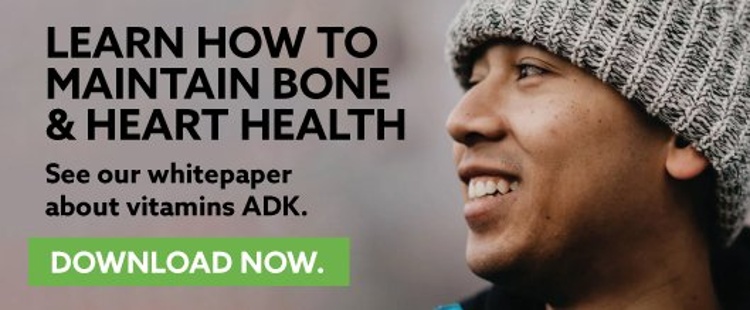.jpg?width=750&name=bones-medical-model-healthcare-nominated_t20_vRak8p%20(1).jpg)
DEXA scans are an important part of clinical practice but they don’t give you enough information about your patient’s bone health. Dual-energy X-ray absorptiometry (DEXA) scans tell you about your patients’ bone mineral density but not their bone architecture matrix or cortical thickening. DEXA scans don’t tell you about bone loss-- until it’s too late.

A fall on brittle bones can be catastrophic. Post-menopausal women, men and women over age 50, and patients with special dietary challenges are just a few of the patient groups at higher risk of having low bone density.1
As we know, bone health is a delicate balance dependent on both bone breakdown and bone building. The integrative and functional medicine practitioner should therefore target both bone formation and bone loss in patients at risk of low bone mineral density.
There is a simple urine test that tells you more about your patient’s bone physiology—especially bone resorption. The Bone Resoprtion Test assesses two parameters, Pyridinium (PYD) and Deoxypyridinoline (DPD). Deoxypyridinoline is found predominantly in bone tissue, whereas pyridinoline is found in both bone and cartilage. As such, high levels of DPD crosslinks are released when bone is broken down (or resorbed). These markers represent a functional assessment of bone metabolism and may be used to monitor bone resorption status and treatment efficacy.
Abnormally high pyridinium crosslinks in urine suggest increased cartilage, connective tissue, and/or bone resorption. For example, pyridinoline might be elevated secondary to autoimmune challenges or chronic alcohol consumption.
Insight into both of these crosslinks can help identify early bone loss and inadequate bone metabolism and in turn provide lifestyle strategies to support bone architecture and cortical integrity.
Bones are a reservoir for many nutrients and can give you clues about your patient’s nutritional status. Nutrients important for your patients’ bone health are: vitamin A,3 vitamin D,4,5 vitamin K,6 adequate protein, and minerals such as calcium, and magnesium.*7 You can prescribe load-bearing exercise such as weight lifting to help your patients build bone density. These interventions can slow bone loss, improve bone density, and reduce fracture risk. With DPD, you can monitor the effects of your treatment protocols.2 Lower levels of DPD mean that your treatment is effectively slowing bone breakdown.
A combination of testing, using DEXA and DPD, is ideal to monitor your patient’s bone health. Meanwhile, you can use a protocol of exercise and nutrition to naturally slow bone loss, improve bone formation, and decrease the risk of fractures in your patients.*
*These statements have not been evaluated by the Food and Drug Administration. This product is not intended to diagnose, treat, cure or prevent any disease.

References
- International Osteoporosis Foundation: Facts and Statistics. https://www.iofbonehealth.org/facts-statistics. Accessed Nov 29, 2016.
- Kitatani K, Nakatsuka K, Naka H, Miki T, Morii H, Nishizawa Y. Clinical usefulness of measurements of urinary deoxypyridinoline (DPD) in patients with postmenopausal osteoporosis receiving intermittent cyclical etidronate: advantage of free form of DPD over total DPD in predicting treatment efficacy. J Bone Miner Metab. 2003;21(4):217-224.
- Weil A. Facts about vitamin A. Supplements & Herbs http://www.drweil.com/drw/u/ART02759/facts-about-vitamin-a. Accessed September 3rd, 2015.
- Cesareo R, Iozzino M, D'Onofrio L, et al. Effectiveness and safety of calcium and vitamin D treatment for postmenopausal osteoporosis. Minerva Endocrinol. 2015;40(3):231-237.
- Rizzoli R, Abraham C, Brandi ML. Nutrition and bone health: turning knowledge and beliefs into healthy behaviour. Curr Med Res Opin. 2014;30(1):131-141.
- Shah K, Gleason L, Villareal DT. Vitamin K and bone health in older adults. J Nutr Gerontol Geriatr. 2014;33(1):10-22.
- Strause L, Saltman P, Smith KT, Bracker M, Andon MB. Spinal bone loss in postmenopausal women supplemented with calcium and trace minerals. J Nutr. 1994;124(7):1060-1064.







.jpg?width=750&name=bones-medical-model-healthcare-nominated_t20_vRak8p%20(1).jpg)




-1.jpg)





